Educator Onboarding
LEO Art Challenge Workshop
ICE 2019: Satellite Tracking, Orbits, and Modeling
SEEC 2019: Satellite Tracking, Orbits, and Modeling
Workshop:ITEC Trek-a-Sat
Workshop: 2018-01-27 Yerkes
Workshop: 2017-10-28 Carthage-Yerkes Electrostatics in Space
Workshop: 2017-06-29-BTCI-Life in Space!
Workshop: 2017-03-11 Yerkes
Workshop: 2017-02-07 SEEC
Workshop: 2017-01-28 Yerkes
Tools You Might Use
Educational Learning
Standards
Documentation
An explanation of aerodynamic lift
Aperçu des sections
-
Author: Peter Higgins, PhD Updated August 2023
Keywords: aerodynamics, lift, wake turbulence, Bernoulli, flow equations, openFOAM, XFoil, JavaFoil
Intended for students 14+
Prerequisites: some basic science, but there are few equations here, whats really needed is curiosity and an interest in airplanes.
Lift is explained as resulting from circulation, and is not the consequence of the widely held but the erroneous equal transit time hypothesis. Both wind tunnel observations and the author's own wing modeling in OpenFoam are used to explain what really happens. It is seen that the vortices that are a danger to following aircraft taking off behind jumbo-jets are also explained as a necessary result of lift generation. This lecture puts the Bernoulli equation in lift generation in proper perspective. The presence of lift in other atmospheres, such as found on Mars, is discussed.
This lesson is intended for high school and lower university levels. It introduces students to the excellent book on the subject by Clancy. Hopefully, some will be inspired to learn computer modeling by looking at the results presented.
Aerodynamic lift refers to the force pushing upwards that is generated on an airplane wing when it moves through the atmosphere. In short, lift keeps the airplane flying, without lift planes can not fly even with powerful engines. Rockets can, but that is another story.
Lift can be understood by wind tunnel observations. When a wing is angled into the flow slightly upward, the flow is always faster flow over the top than under it. According to the principle of conservation of energy, such faster flow lowers the top surface pressure forcing (or sucking) the wing up. This principle was discovered by Daniel Bernoulli and will be discussed later.
A question remains, however, why is the top flow faster when lift occurs? A common reason presented for this phenomenon is that the path over the top surface is longer than the path along the bottom surface so that flow over the top speeds up to join its counterpart at the trailing edge. This is wrong because as observed in wind tunnels, when flow recombines the top flow does not meet its counterpart that split at the front. The real reason is described in this lesson.
Anticipating that some students will want to learn more about the performance of wings, known as airfoils, this lesson identifies three programs available for free that can be run by high school students to quantify lift for different airfoils. Airfoil shapes for different airplanes, like the Boeing 747, can be downloaded from the Internet. Analyzing wing performance could be a great Senior project.
Lastly, since this lecture has been done with space exploration in mind, the lift of NASA's Martian helicopter is studied. It is noteworthy that it actually flew successfully because the Martian atmosphere is so thin compared to the Earth's. You can run the programs discussed in this lesson to see for yourself.
-
The airfoil
There are two airfoil sources on the internet:- NACA airfoil generator
UIUC Airfoil Data Site
I flew Blanic gliders, its airfoil is NACA 2412. This wing can be defined by source 1:Reynolds Number and other terms to knowYou should know the defining dimensions of a wing: wingspan (distance from wingtip to wingtip), chord (horizontal distance from leading to trailing edge which can be at the wing root, at the tip, or an average of these, a characteristic chord is computed from wingspan divided by chord which is called aspect ratio).To analyze airfoils by the three, free, programs that are available to you for downloading, you have to know the Reynolds number which characterizes flight speed. The Reynolds number for airfoils is:Re = V c / νwhere V is the flight speed, c is the chord length, and ν is the kinematic viscosity of the fluid in which the airfoil operates, which is 1.460×10−5 m2/s for Earth's atmosphere at sea level.So, the Reynolds numbers to look for the Blanic wing include: stall speed, 40 miles/hr, best lift speed ~70 miles/hr, and maximum flight speed, ~157miles/hr. The Reynolds number for these are:
1,495,000
2,660,000
5,800,000FoilSim II from Glenn Research Center, NASA
Lift simulation on Earth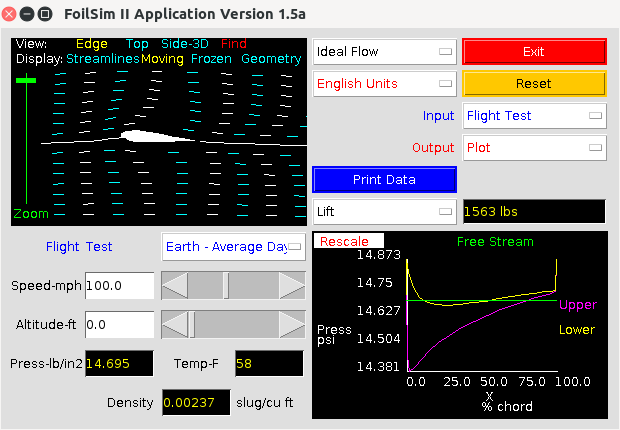
Mars lift simulation
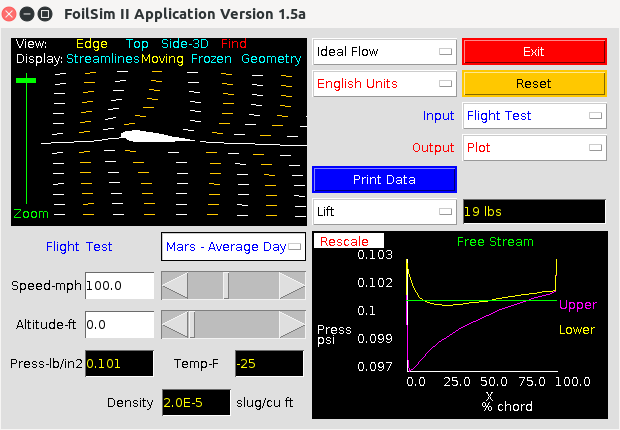
This program will compute the change in lift for the average day atmospheres of Earth and Mars for a specific airfoil as shown in these views:
Lift on Mars (left) vs. Lift on Earth (right) 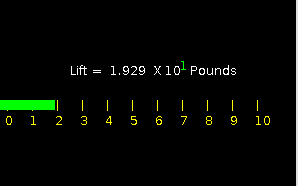
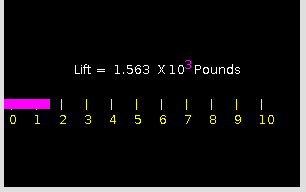
This program expects the lift on Mars to be 19.3/1563.0 (pounds) or 1.23 % of that on Earth. This means a Martian helicopter needs wider blades that rotate much faster, and that its payload will be much smaller.Two other programs may interest you: MIT has developed XFoil (scripted, and just for analysis of a wing), and XFLR5 (with a Graphic Interface, GUI; for analysis of both a wing and a plane having three airfoils, wing, elevator and fin). Unfortunately, XFLR5 is much harder to learn. Below is a screencopy of a wing from the analysis in XFoil showing the distribution of pressure on the wing surfaces.
XFLR5 from MIT
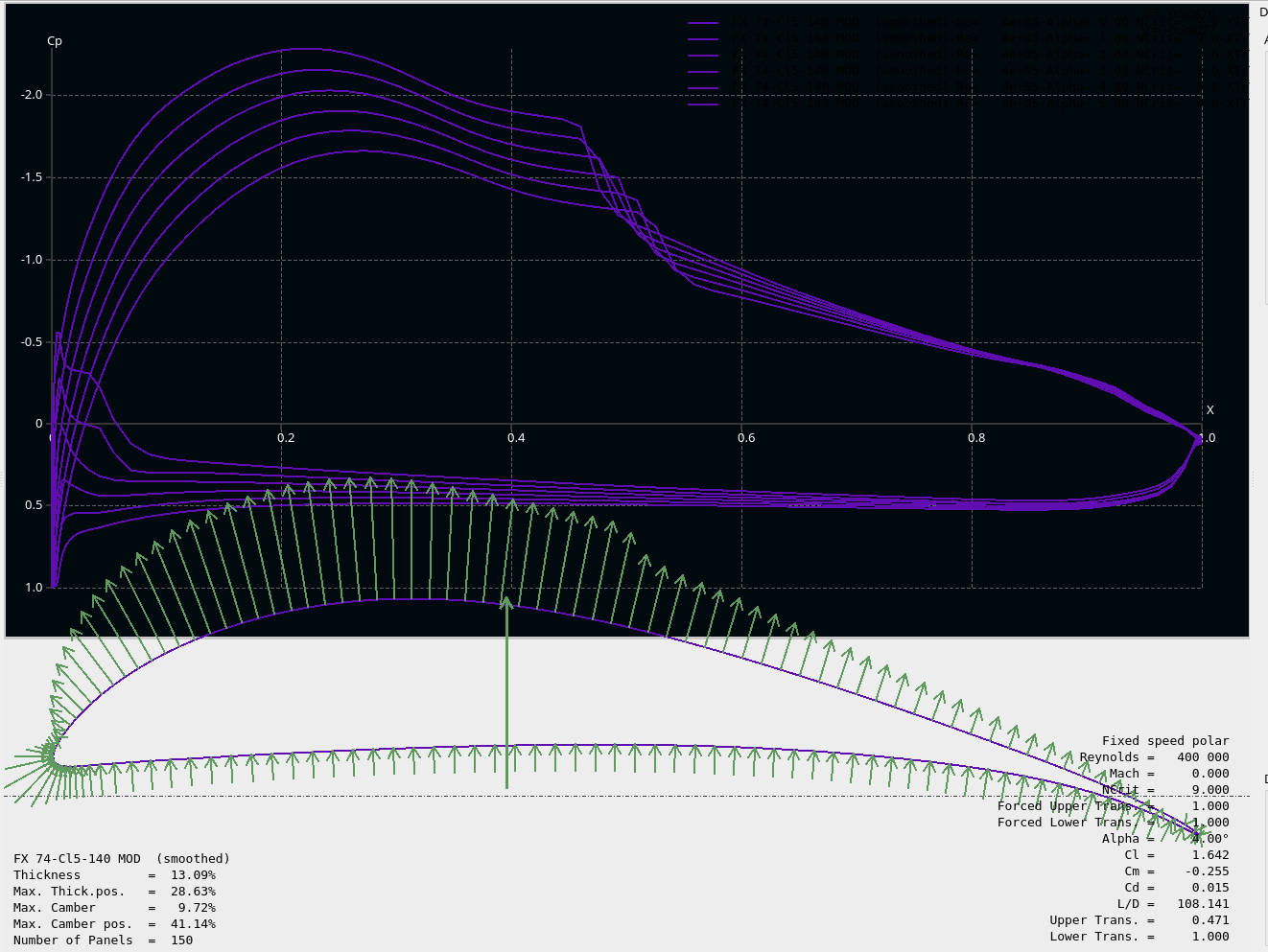
JAVAFOIL
The third program of interest is a java program called JAVAFOIL. It does an extensive wing analysis similar to XFLR5, but not a complete plane. It is much easier to learn to use. Following are screencopies
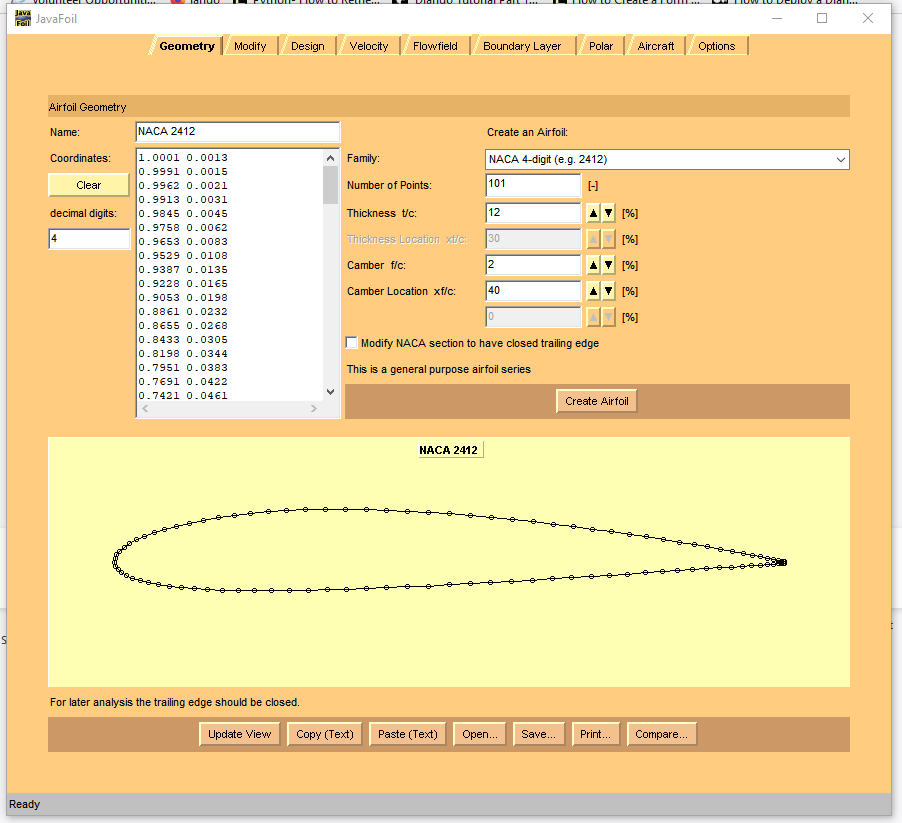
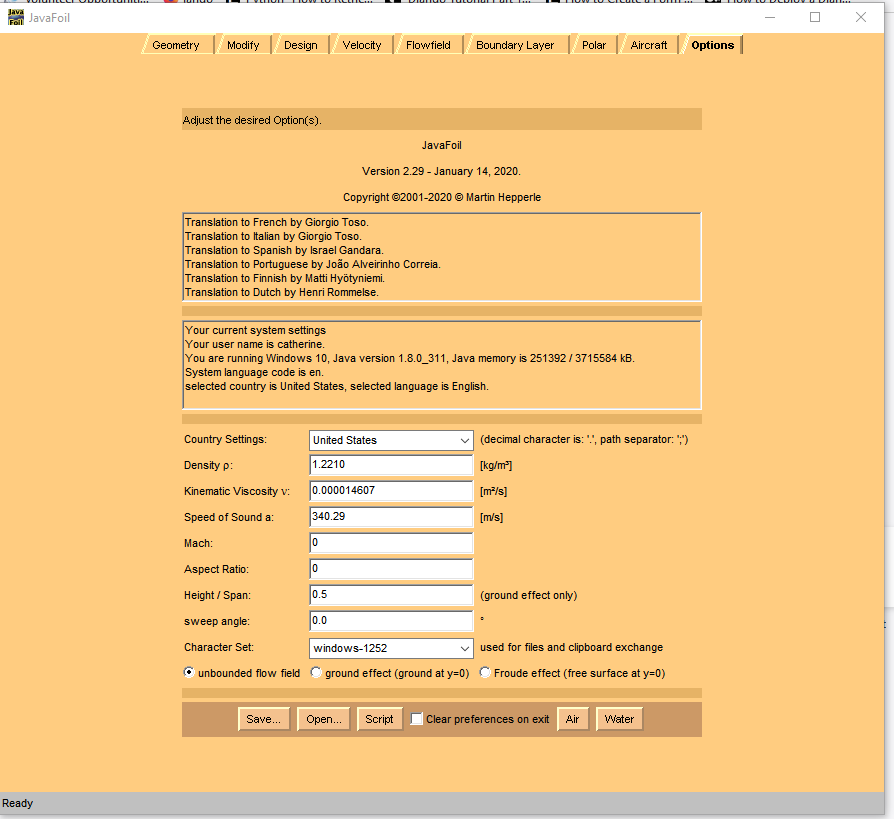
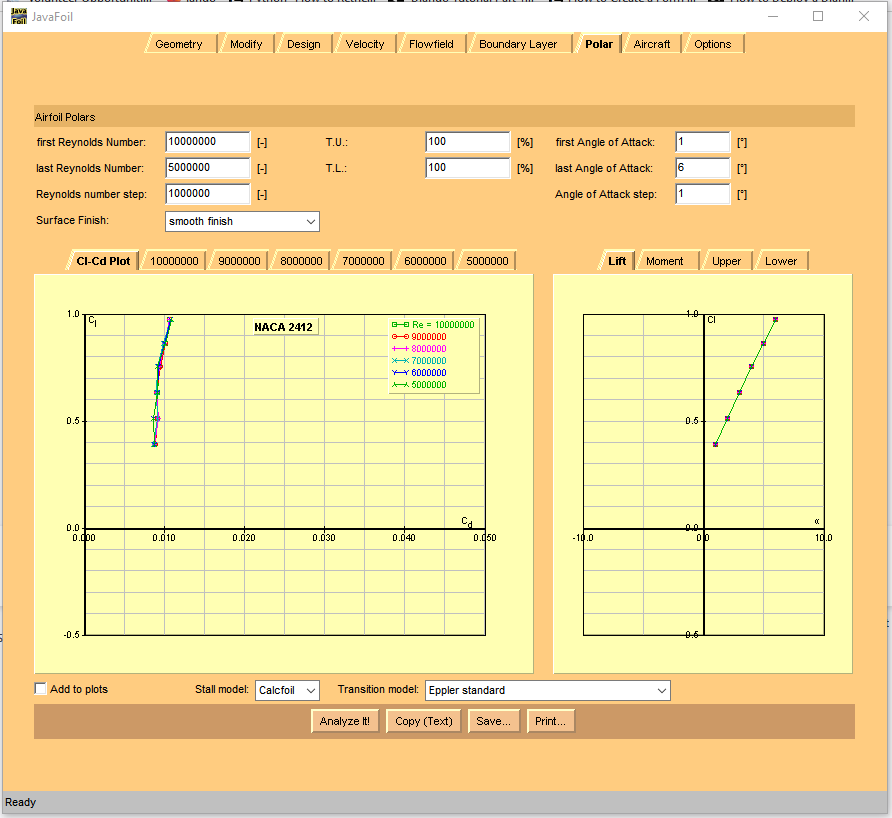

Student project ideas
You might get interested in the physics of flying, and flying yourself. Consider visiting your local soaring club if you live near one. Most clubs are happy to provide demonstration flights in two person training gliders with seasoned instructors for less than $50.00 (as my club in Houston did). You can prepare for this by reading soaring books like "The Joy of Soaring" (which is a training manual, but is in most large public libraries), or "Once Upon a Thermal" the story of a nearly 50 years old man, Richard Wolters, who took up soaring and became famous.On a demo flight you will experience stalls, and maybe spins (if you want), but surely you will experience thermalling which is gaining altitude by circling slowly and tightly with flaps out over terrain that produces a rising hot air column like a freshly plowed field, or a superstore black asphalt parking lot. Gliders have a special instrument called a variometer that displays vertical climb, and beeps when the glider passes over these columns of rising air - that's how gliders stay up and can cross hundreds of miles in daylight.Then you can analyze the performance of the glider's wing with one, or more, of the programs above. If you're really adventurous you can go further to use xflr5 (the big brother of xfoil) to analyze the complete wing, or even the complete plane. Below is an example of an analysis by xflr5 of a complete wing: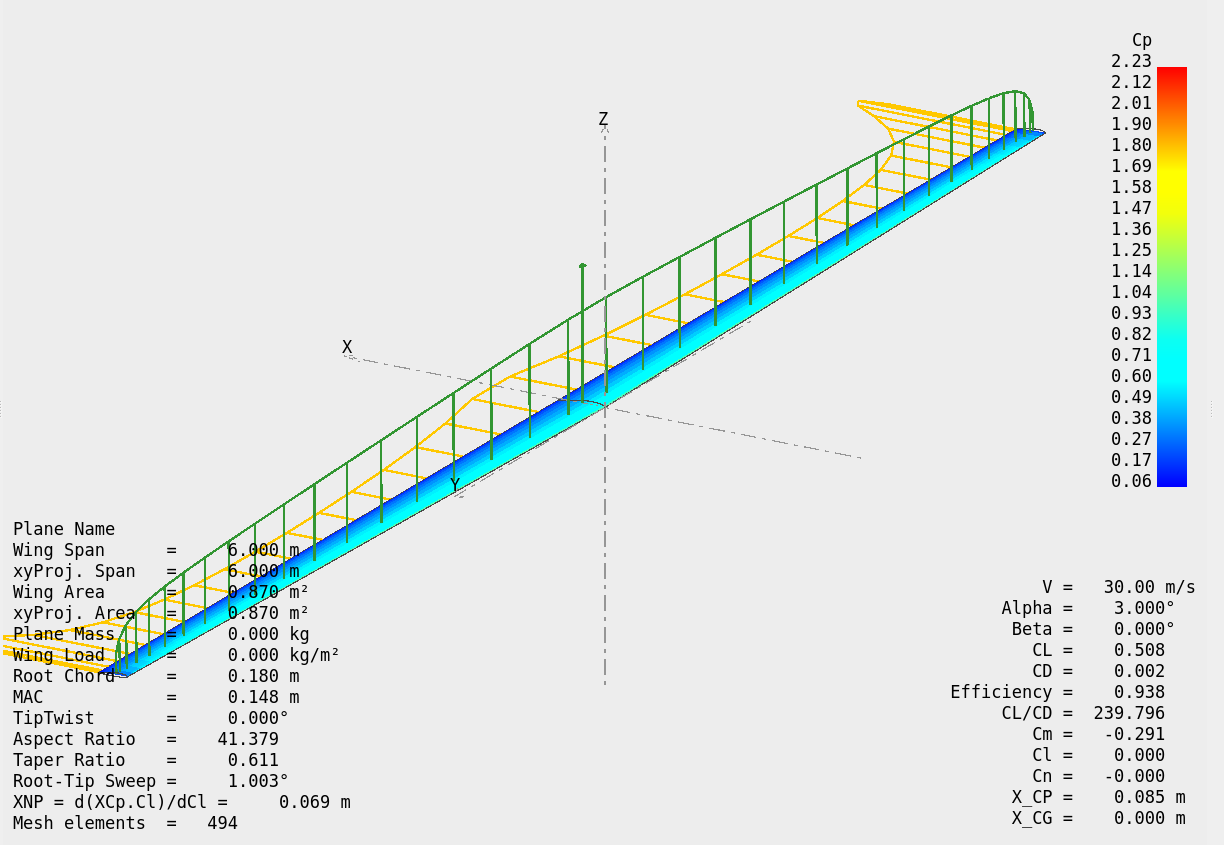 You can make a large poster of your project for display at your school's science fair, (the American Society of Mechanical Engineers, ASME, even has opportunities for poster displays in ASME conferences that include junior contrbutions). Have you wondered how these large colorful posters are made? This is how: in Powerpoint made a large slide, add your graphics and text to it, then print the slide with a large format HP printer. (such as HP Designjet 630)
You can make a large poster of your project for display at your school's science fair, (the American Society of Mechanical Engineers, ASME, even has opportunities for poster displays in ASME conferences that include junior contrbutions). Have you wondered how these large colorful posters are made? This is how: in Powerpoint made a large slide, add your graphics and text to it, then print the slide with a large format HP printer. (such as HP Designjet 630)
